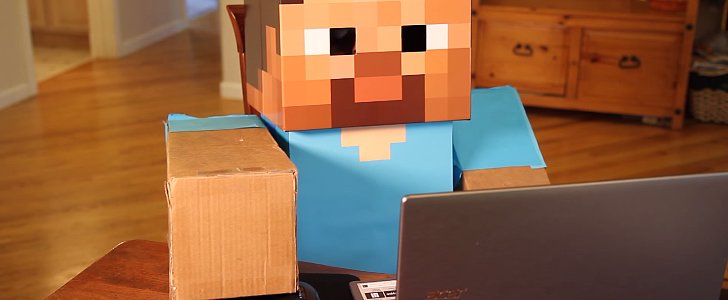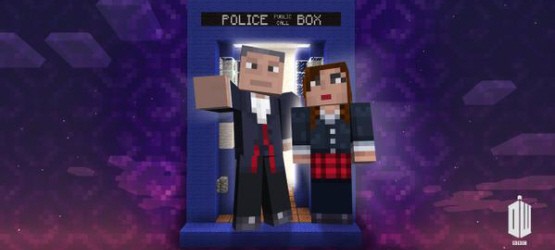
by Stone Marshall | Sep 30, 2015 | Minecraft News |
Available now in Europe, with North America and Japan getting it later today (Update: It’s out now in North America), Minecraft update 1.20 on PlayStation 4, PlayStation 3, and PlayStation Vita adds support for the new Doctor Who Skin Pack, while also fixing a couple of issues, including a memory leak that caused frame-rate problems.
Here’s the full list of patch notes for today’s update, which apply to all platforms unless otherwise noted:
Additions
- Added Doctor Who Skin Pack Bundle trial content.
Fixes
- Fixed a memory leak causing frame-rate issues.
- Fixed an issue causing signs to go blank for network players.
- Updated trophies to include all those already on other platforms. 23 added in total. (PS3 only)
Discussing the future of big Minecraft updates on consoles, developer 4J Studios said earlier this month:
No news yet, other than we’re working on it. The next few updates will be small, while we get the 1.8 update ready.
If you’re looking to purchase the Doctor Who Bundle, it’s available through the PlayStation Store for $5.99 (PS4, PS3, PS Vita).
Here’s the description:
Launch yourself on an epic adventure in space and time with this bundle of Minecraft Doctor Who Skins Volume I and Volume II. With the combination of these two skin packs you will have over 100 characters from all eras of the show’s history including all the Doctors, Amy Pond, Clara Oswald, Rose Tyler, Zygons, The Master, Weeping Angels, the Daleks, Davros, Donna Noble, Captain Jack Harkness, K9, Brigadier Lethbridge-Stewart, the Sea Devil and the Cybermen.
You can check out some screenshots in the gallery below.
As Telltale Games and Mojang announced recently, Minecraft: Story Mode is coming to PS4 and PS3 this October through digital and retail stores.
Minecraft Update 1.20 Today on PS4, PS3 & PS Vita Adds Doctor Who Skin Pack, Fixes Frame-Rate Issues
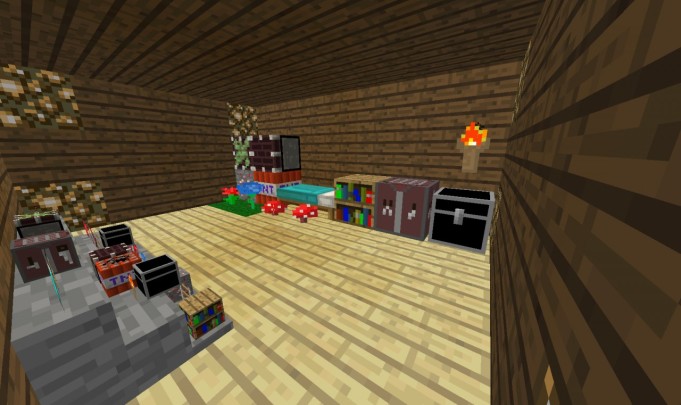
by Stone Marshall | Sep 29, 2015 | Minecraft News |
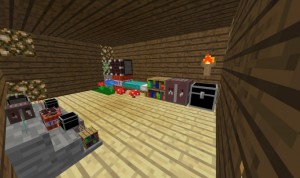
Minecraft is one of the most played games out there, whether we’re talking about the PC version or the console version. It is one of those games where both kids and mature people can have fun while playing it. With other words, Minecraft is one of those games that you can play with your kids and have a great time.
In Minecraft, you and your kids will need to craft weapons, create buildings and get ready for the night when “evil” creatures wake up and will try to harm you. If you don’t want to play the survival mode, you can also play the creative mode, where you will have to use your creativity and build an entire city (if you want to).
However, today we’re going to talk about the new Minecraft update version 1.20 which was released for PS3, PS4 and PS Vita consoles. This patch is currently available only in the Northern America and Europe, but Japan will follow later today.
The new Minecraft update comes with Doctor Who Skin pack, but also includes some fixes such as the memory leak which was causing the FPS (frame rate per second) problems.
Minecraft Update version 1.20: What’s New?
– Doctor Who Skin Pack Bundle Trial Content;
– The memory leak that was causing the FPS issues has been fixed;
– An issue that was causing signs to go blank for the network players has been fixed;
– The trophies have been updated and now include all those that are already on other platforms (23 new trophies have been added) (PS3 only).
4J Studios, the developers of the console version of Minecraft, said that they are currently working on some other small updates before they get the 1.8 version.
If you want to purchase the Doctor Who Bundle skin pack, you will be able to buy it from the PlayStation store for 5.99 dollars.
Minecraft 1.20 Update Released for PS3, PS4 and PS Vita – A New Skin Pack And Top Features
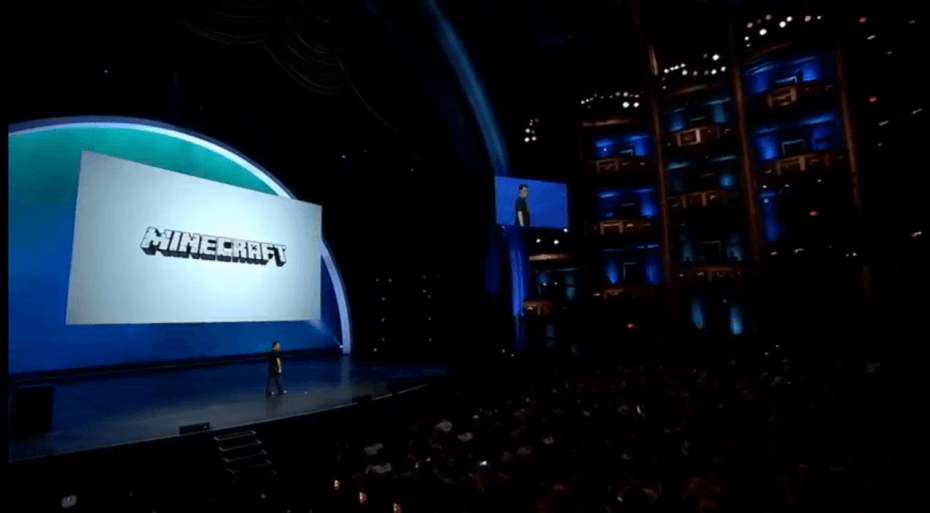
by Stone Marshall | Sep 28, 2015 | Minecraft News |
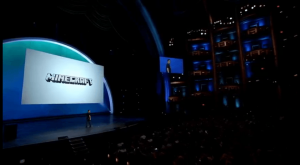
Oculus VR chief technology officer John Carmack was desperate to get the block-building open-world game Minecraft into virtual reality, but it took a lot of effort and a meeting between two of the most powerful people in tech to make that happen.
At the Oculus Connect developer conference in Hollywood today, Carmack explained that, for him, VR gaming is all about exploring worlds. He explained that cresting a hill to see a beautiful vista “means something” when you’re in a head-mounted display, and he could think of no better game to bring that kind of experience alive than Mojang’s exploration-heavy phenomenon. So he got to work convincing Mojang and, eventually, Microsoft to let him make that happen — but he needed the power of Mark Zuckerberg to finally seal the deal.
“Minecraft was my quest, really, for the last year and a half,” Carmack said. “Before Gear VR even existed, Minecraft was something I was desperate to get into virtual reality because I thought it would be critically important.”
From VentureBeat
Gaming is in its golden age, and big and small players alike are maneuvering like kings and queens in A Game of Thrones. Register now for our GamesBeat 2015 event, Oct. 12-Oct.13, where we’ll explore strategies in the new world of gaming.
Carmack explained that while Minecraft is a game about exploring, it also has a number of other aspects that make it ideal for VR. It’s a metaverse with an infinite number of worlds where people can put on different skins to play as different characters. And it was with that stuff in mind that Oculus invited Minecraft creator Markus “Notch” Persson into the office to talk about putting a version of the game into the Rift.
“We had Notch over,” said Carmack. “And we showed him early prototype stuff, and I talked with him about geeky programmer stuff for a long time. We were trying to get into a situation where he would let us try to put the [mobile] game on Gear VR — if it’s great, then we’ll see where we can go from there.”
But that didn’t work out right away. You might remember that when Facebook acquired Oculus in July 2014, Notch “blew up about it,” as Carmack puts it. Notch referred to the social media company as “creepy” and publicly stated that it wasn’t the partner he was envisioning when he backed the original Oculus Rift when it was just a Kickstarter project.
“Notch eventually got over that, and then there was the Microsoft acquisition,” said Carmack. “I started pestering Mojang about it. I would drive home this case that ‘we don’t want to ask anything from you. Just let me try to build this, and if you think it’s cool, then we’ll figure it out from there.’”
Carmack said he was so confident that Minecraft would work that he would agree to just about anything with Microsoft — and that seemed to do the trick.
“Microsoft actually got me GitHub access to the Minecraft: Pocket Edition code base,” he said. “But we signed a contract that our lawyers said was terrible. ‘They own everything you do. John, you’re basically working for Microsoft when you’re working on this.’”
But the CTO assured Facebook and Oculus’s legal team that this was worth it, and he got to work. Now, it’s up to him to get it up and running. He says he’s already given the framerate a boost and implemented head-tracking, which are the “fundamentals of VR.” But he’s also considering all kinds of other technical improvements — although, he notes that a lot of that stuff isn’t critical.
“It was amazing how quickly I was thinking to myself that I’m in the game and having fun,” he said. “I’ve played more hours of Minecraft in [Samsung’s] Gear VR than all other games put together. I still want to fix everything — I’ve talked to Mojang’s engineers about it. But it turns out that I wouldn’t say they are at all necessary for an initial release because I had an immense amount of fun with it.”
But despite all of that, Minecraft almost didn’t end up on the Oculus stage today. It took a last-minute emergency meeting to make that happen.
“I guess I can say this now. I got the email at 12:30 a.m. this morning that the deal was signed,” said Carmack. “We did all this preparation about how to announce it with the assumption that we would get to, but it really came down to the wire.”
Carmack said that after he did the initial work on Minecraft for VR about eight months ago, Oculus and Facebook spent the rest of the time trying to reach a deal with Mojang.
“I was willing to do just about anything,” he said. “On the phone I said that if this doesn’t happen, I’m going to cry. This will just be so terrible. This will be the best thing that we can do for the platform. But there are some problems that compilers can’t solve.”
It turns out that the solution was to get the top executives from Facebook and Microsoft together.
“Mark [Zuckerberg] and Satya [Nadella] were able to sit down and make sure that the deal happened,” said Carmack.
“I’ve called this my grail,” he continued. “I think it’s the single most important application that we can have to ensure we have an army of fanatic, passionate supporters that will advocate why VR is great. It’s part of this infinite playability that our current ecosystem is missing.”
How John Carmack pestered Microsoft to let him make Minecraft for Gear VR
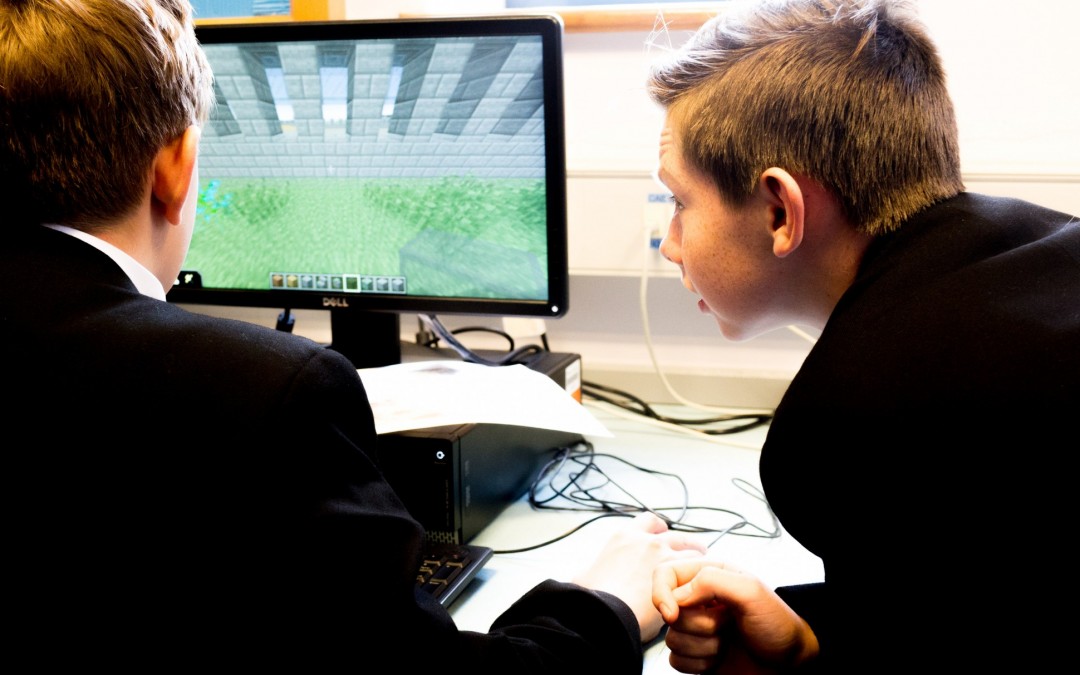
by Stone Marshall | Sep 27, 2015 | Minecraft News |
You have probably heard of Minecraft. It is the most popular video game of all time, played by both kids and adults. It is more than just a game. In fact, because the objectives are user generated, the rules flexible, and the components modifiable, it may not be a game at all. At least not in the structured sense that, say, baseball is a game. Minecraft is more like a platform on which games can be played. Players build, socialize, explore and learn with Minecraft. It is more sandbox than sandlot.
Today’s kids are completely absorbed into the world of Minecraft, and many parents are worried.Where ever I go, moms and dads haphazardly toss around words like “addiction” and “obsession.”
“My kid just watches videos on YouTube all day,” they complain, “or she’s on some server or something, doing whatever it is that they do. I can’t get her to stop!”
I patiently explain that their children are using creative problem solving abilities, number sense, spatial conceptualization, aesthetic sensibility, social-emotional skills, complex imaginative reasoning and more. Additionally, they’re doing all of this in a multiplayer mode that’s sophisticated and collaborative. They’re interacting with kids all over the world, sharing projects and perspectives.
I suspect that these Generation Blockhead Minecraft kids will grow up to change the life-world in ways that we can barely begin to imagine. But they need more guidance and support—less panic and paranoia.

1. Parents Are Over-reacting
Please don’t try to exorcise the game from your kids’ lives like it is some sort of evil satanic temptation. Remember that when parents turn away from their children’s world, children turn away from their parents. Certainly, Generation Blockhead kids shouldn’t play all day; moderation is key. And parents need to teach them reasonable limits. But don’t use the word “addiction” or “obsession.” It just reinforces helplessness, disempowers humanity, and teaches our children to surrender their autonomy to the sensational appeal of digital machines.
Kids need your help learning to manage their time, figuring out how to play responsibly, and understanding how to make meaning out of a complex virtual world. So try playing with them; or just play by yourselves. Download the pocket edition to your smart phone. Ask your kids to explain how it works. Talk to them about the game. When parents take an interest in their children’s world, human progress reaches its apex. One foot stays firmly planted in the mature values of the past, while the other skips youthfully into the technological future.
Kids need your help learning to manage their time, figuring out how to play responsibly, and understanding how to make meaning out of a complex virtual world. So try playing with them; or just play by yourselves. Download the pocket edition to your smart phone. Ask your kids to explain how it works. Talk to them about the game. When parents take an interest in their children’s world, human progress reaches its apex. One foot stays firmly planted in the mature values of the past, while the other skips youthfully into the technological future.
2. Minecraft Belongs In The Classroom
Some adults get it. There are teachers that see the power of Minecraft. They recognize the possibilities. All around the globe, there are classrooms in which MinecraftEDU has become a teaching tool as fundamental as the chalkboard. Using a version specifically designed for the classroom—fitted out with teacher controls—classroom innovators imagine creative activities that take place with students crowded around PCs and tablet computers. They collaborate as a cohort of peers, navigating blockheaded avatars through a user-generated pixelated universe.
In Northern Ireland, in fact, all of the schools use Minecraft. They’ve made a system-wide decision to integrate it into ordinary curricula. I visited classrooms in Derry/Londonderry where students were recreating the country’s landmarks, discussing history, geography, and culture. The kids were engaged and excited. It was precisely the kind of experiential project-based activity that education experts have been praising for decades. The kids weren’t hindered by the limits of life-word space. It didn’t require access to expensive materials and well maintained model-building tools. There was no learning curve to acquire the necessary construction skills. The students just did it. They jumped right in to rigorous hands-on learning.

3. Stop Complaining And Start Embracing
Back in the United States, however, I often meet teachers who protest that their students get enough Minecraft time at home. School, they argue, is a place for pencils and books. To this “sanctity-of-school” argument, I ask, do we make the same school/home division when it comes to literacy, social/emotional skills, science, art, music, math, or conflict resolution? Do we tell them not to use these things at home? Why would we relegate the use of certain tools and proficiencies to one place and not welcome them into another?
Remember, school is not the temple at which we worship the technological landscape of the past. It is a safe space where we teach young people to how to responsibly integrate millennia’s worth of human wisdom and knowledge into current everyday lived experiences. Schools shouldn’t fear technological cross-contamination; they should embrace it. We should encourage Generation Blockhead to practice using philosophy, economics, political science, and engineering on Minecraft servers.
If you talk to grown-up Minecraft fans, you’ll discover that, just like the curmudgeonly teachers, many also object to moving it into schools. For these folks, however, it is all about the sanctity of the video games. “Please don’t educationalize it,” they plead, “school will strip the game of everything that makes it fun.” My heart breaks for these naysayers. Their argument reveals a lot about the miserable experience they must have had in the classroom.
School only feels frustrating to students when academic content is presented for the sake of obedience, rather than empowerment. School should be enjoyable. Arguing that we should divorce creativity and fun from academia—for fear that school will contaminate the purity of play—is absurd. It reinforces the misguided conception of play-as-superficial that’s already threatening to eliminate recess, music, painting, and the performing arts from all non-elite institutions.
Our schools need more playgrounds, not less. More slides. More swing sets. More sandboxes.
4. Sandboxes Once Changed The World
One could argue that sandboxes—the real ones, not the digital kind—were a fundamental part of the social progress that came about during the 20th Century.
You may be surprised to learn that sandboxes have not always been a part of childhood. They are relatively recent, dating back to Friedrich Froebel’s 19th Century Kindergarten movement. Back then, “Sand Bergs” were new features in Germany’s playgrounds and parks. They first showed up in the United States around 1885. Physician Marie Elizabeth Zakrzewska visited Berlin and, upon her return to Massachusetts, reproduced the play spaces at home. They were known as Boston’s “sand gardens.”
These “sand gardens” became so popular, so quickly, that in 1897 child psychologist G. Stanley Hall undertook a focused case study of one such “sand-pile.” It was located in “a quiet community of a few score families of farmers, some twenty or thirty miles from Boston.” Hall wrote an account of his observations entitled: The Story Of A Sand-Pile. In the book, he tells of children building “wells and tunnels; hills and roads like those in town; islands and capes and bays with imagined water” as well as “mines of ore and coal, and quarries of stone, buried to be rediscovered and carted to imaginary markets.”

Of course, there’s nothing particularly profound in realizing just how easily the internet allows us to interact with people around the globe. But when you think of Minecraft as a global sandbox, Generation Blockhead becomes even more amazing.
See, Hall discovered something really important in that sand-pile outside of Boston in the 1890s. He found a community of boys that was not only cultivating an enriched, playful, and adaptive sense of the individual self. They were also, in effect, practicing local civics. They were applying and experimenting with the sorts of individual cognitive skills that we teach in schools. And simultaneously, they were using that academic content, those practical skills, and a unique sense of identity in order to practice being meaningful contributors to a local democratic society.
I suspect that those children eventually grew up into a community that was just as regional as the sand-pile. Today’s students, alternatively, will grow up to discover themselves in a world that demands they participate in a global economy. Our 21st Century children’s civic responsibility, their ability to contribute, and their capacity to collaborate with a diverse group of people, therefore, requires a different kind of sandbox. The internet is rapidly creating communities that transcend geographical limitations. We are no longer tethered to land. Thus, education is now responsible for training workers, cultivating thoughtful individual citizens, and preparing people to live a fulfilled life within the first-ever truly global civilization.
Lucky for us, Minecraft already provides the perfect sandbox, now we just need all of our schools to help kids realize it’s potential.
Everything Teachers, Parents (And Players) Need To Know About ‘Minecraft’













